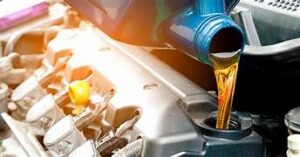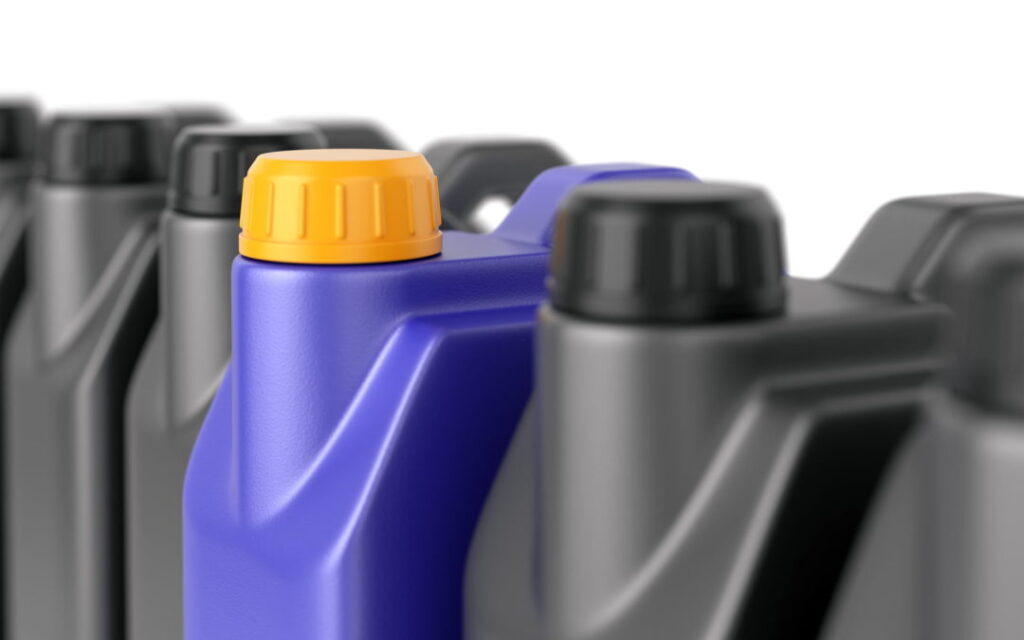The crankcase of most passenger cars today holds only about four quarts of oil. If you are running your vehicle a quart low on oil, then you are running the engine with 25% less oil. Although owner’s manuals often state that it is “okay” to wait to add oil until the oil level falls below the add mark, this may not be wise.
 In addition to controlling friction and wear, motor oil has many important functions. Oil not only lubricates the engine’s internal parts, but also helps cool the bearings and other frictional surfaces. The oil in the engine gathers up unwanted heat to transfer it out of the engine. Under typical driving conditions, running a quart low may not make much difference in terms of bearing temperature or overall engine lubrication. However, this does not offer much protection to your engine when running in harsh conditions such as hot weather or while towing.
In addition to controlling friction and wear, motor oil has many important functions. Oil not only lubricates the engine’s internal parts, but also helps cool the bearings and other frictional surfaces. The oil in the engine gathers up unwanted heat to transfer it out of the engine. Under typical driving conditions, running a quart low may not make much difference in terms of bearing temperature or overall engine lubrication. However, this does not offer much protection to your engine when running in harsh conditions such as hot weather or while towing.
When you’re 25% low on oil, you are 25% low on critical additives that prolong the oil life and the life of your engine. Also, when you’re 25% low on oil there is less oil to disperse harmful contaminants, acid, soot, fuel, sludge, and water that enter the crankcase. When you do the math, being a quart low on oil translates to a 33% increase in contaminant concentration. The remaining oil will also spend less time at rest in the oil pan and more time in the hot frictional zones of the engines. The added heat and pressure will more rapidly degrade the oil and its additives.
Don’t wait until the oil is a quart down to top it off. If it needs half a quart, add half a quart to bring it back up to the full mark. Be careful not to overfill the engine. In addition to problems caused by overfilling the crankcase, too much oil may cause leaks. High-riding oil is more easily forced past seals and gaskets.
Mixing Lubricants: A Recipe For Trouble
A recent study showed that 23% of gearbox failures could be attributed to “wrong lubricants and lack of oil”. There is no doubt that using the wrong lubricant, or mixture of lubricants, is a major cause of machine failure. In most cases, lubricant mixing occurs due to a lack of knowledge about the possible negative consequences.
Mixing lubricants can cause issues for the lubricant itself and the machine. These issues include:
• Incompatibilities between the base stocks, commonly encountered when switching between minerals and some synthetics.
• Seal expansion or shrinkage issues, usually as a result of base oil changes, leading to possible leakage and seal failure.
• Incompatibilities between additive packages. Problems here can include additive precipitation, loss of anti-wear performance, loss of emulsification properties, reduction of oxidation stability, and the loss of storage stability when mixing lubricants in storage tanks.
• With greases, incompatibilities between different types of thickeners. Grease thickeners are notoriously incompatible, and the wrong mixture or grease can result in consistency changes and excessive oil bleed. Just because a grease thickener is described as polyurea, for instance, does not mean it is compatible with other polyurea.

